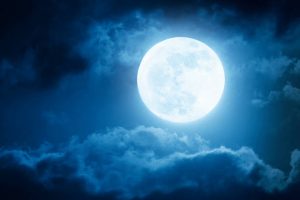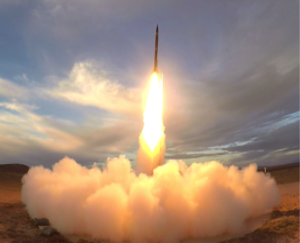Neil Armstrong, the first man to step foot on the moon, was the last person with whom you’d ever wish to speak if you wanted to hear a gripping, first-person account about his and Edwin “Buzz” Aldrin’s landing on the lunar surface on July 20, 1969.
At an exclusive aerospace industry gathering one summer evening almost 30 years to the day after that historic date, my wife and I were asked would we mind if Armstrong and his wife joined us for dinner in a private dining room. The four of us had arrived at a hotel venue after everyone else had been seated, and there was insufficient space in the main dining area.
MIND?! My initial reaction was a mixture of unadulterated fear and excitement. I knew I would have countless questions about his experience. Mindful of my lifelong love of aviation— space exploration, in particular—how, I wondered, could I possibly contain my over-the-top enthusiasm at this unexpected opportunity to have a casual, off-the-record conversation with one of history’s most intrepid explorers?
Over the next two and a half hours, we discussed the moon landing alright, but we might as well have discussed the weather. To listen to Armstrong, what he and fellow crew members had accomplished was little more than another successful mission in service to the nation and science in general. Never mind that the two of them publicly confronted death at least twice before they famously touched down. Small wonder that Armstrong’s heart rate hit 150 as they descended toward the surface. It was all in a day’s work, the former civilian X-15 test pilot and naval aviator might well have stated. True to character, there was no hint of exuberance as we dined and conversed. Nor was Armstrong inclined to describe in much detail any of the more white-knuckled segments of what he and Aldrin had done.
Quite the opposite. This American hero emerged from the daunting eight-day Apollo mission much as he entered—humble, ultra-low key, reluctant to place himself center stage, eager to honor his Midwestern heritage and devoted to engineering. Intensely private, Armstrong was comfortable to let the policy and decision makers in and outside of NASA, the engineers, and his fellow astronauts take or share the credit for the pioneering lunar explorations.
Unlike Armstrong, who held his emotions in check throughout our lengthy dinner 20 years ago, the nation and much of the rest of the world now are expressing what appears to be a newfound appreciation for the moon landing—a welcomed change, considering that for three decades after the end of the Apollo program few thought much about the moon. There’s even widespread speculation about its deeper meaning, as well there should be.
The lunar landing wasn’t just a great American scientific achievement. On a grander scale, the daring voyage of Armstrong, Aldrin and Michael Collins was also humanity’s lunar journey. A global audience of an estimated 600 million people—about one-fifth of the world’s population at the time—tuned in to hear Armstrong inform NASA’s Mission Control: “Houston, Tranquility Base here. The Eagle has landed.”
Something of a new race to the Earth’s celestial companion is underway, though the motivations are different from those a half century ago, and there are many more players. The impetus? The discovery that there’s water deep within polar craters. Broken down into oxygen and hydrogen, it potentially could serve as an invaluable source of drinking water and breathable air for future astronauts, and also rocket propellant.
Thus, it is very conceivable—indeed likely—that the moon eventually will become not just a permanent human outpost, but also a fuel depot for manned spacecraft on scientific missions in route to other destinations within the solar system

There is little doubt that humans over the long term will remain fascinated by the possibilities, the challenges, the discoveries, the awe of space travel. Exploring the unknown is fundamental to human nature just as much as the instinct to survive and reproduce; courageous explorers have demonstrated as much for millennia. As President Barack Obama observed following Armstrong’s passing on Aug. 25, 2012: “When Neil stepped foot on the surface of the moon for the first time, he delivered a moment of human achievement that will never be forgotten. Today, Neil’s spirit of discovery lives on in all the men and women who have devoted lives to exploring the unknown…”
Nearer term, the quest to explore the moon, Mars and other celestial bodies is uncertain. In the U.S., which sent 24 astronauts toward the moon from 1968 to 1972, priorities shift based on politics and public support. The U.S. space program was at its pinnacle in 1969. The momentum seemed unstoppable. Then the pioneering initiative lost its luster for then-President Richard Nixon and many other Americans, and within five years of Armstrong’s “one small step” the Apollo program was unceremoniously cancelled.
Critics of the cost to land humans on the moon and safely return them to Earth, then and even now, insist the money should have been spent to fight poverty in the inner cities and find cures for a host of diseases. But it’s easy to forget that the seven-year lunar landing program, starting in 1962, sparked an era of hard engineering and inspired a generation of boys and girls to pursue careers in a wide range of scientific fields. It spawned some of the greatest innovations of all time—GPS and cheap digital communications, for example, that the world conveniently takes for granted—not to mention multibillion-dollar industries that provide hundreds of thousands of jobs.
Just as humanity’s lunar journey was the twilight of an extraordinary era of innovation and discovery, the U.S. and other countries today stand on the threshold of a new era of space exploration. The possibilities are endless, and the discoveries are beyond anything the sharpest minds can fathom during this landmark anniversary of the first moon landing. And it’s all being propelled by the indomitable human spirit to explore the unknown, just as the Apollo 11 team was doing 50 years ago.
From the Editor:

To learn how Dassault Systemes is training the next generation of Rocket Engineers, read about our partnership with Base 11 and the Base 11 Space Challenge
Read this week’s blog post from Dassault Systèmes SIMULIA brand, Nostalgic About NASA’s Moon Landing? Imagine What the Next 50 Years Will Bring!
And to learn how Dassault Systèmes is helping transform aviation for manufacturers, suppliers, and air travelers by breaking down the barriers to innovation, Read Here
